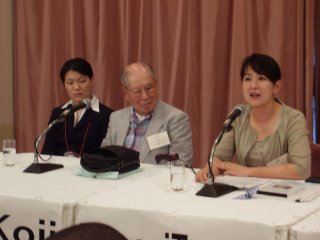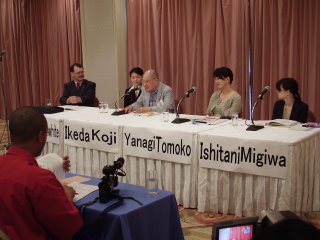

Peace seminar
Mrs. Yanagi spoke first. She is a teacher in Hiroshima. Her father was just one mile away from the epicenter in Hiroshima. However, he was behind a high wall and survived. After the blast, he walked 12 miles to his parents’ house, through what was left of the downtown area. One major problem was that no one understood that this was an atomic bomb, so people who survived the blast went into the city looking for loved ones and they died very soon thereafter (and are included in the statistics for those who died from the blast). It was only several days after the blast that people realized it was an atomic bomb. A doctor at local hospital realized it after all of his x-rays came back white.
For a long time, he didn’t talk about what he had been through. People thought that radiation sickness was contagious. People eventually realized this wasn’t the case, but survivors and their children were still discriminated against because of the fear of genetic mutation. Her father died of old age – not cancer or any other disease related to radiation. Mrs. Yanagi developed thyroid cancer and had her thyroid removed over the winter. She said it is fairly common for survivors’ children to develop that kind of cancer. The Japanese government paid for most of her medical bills because she is the child of a survivor.
When Mrs. Yanagi visited Singapore and Korea, she was surprised to find out that the atomic bombing of Japan was looked upon favorably because it marked the end of the Japanese occupation of their countries.
Survivors of any exposure to atomic/nuclear radiation are called Hibakusha in Japanese. This would include those who survived Chernobyl in the Soviet Union in 1986.

0 Comments:
Post a Comment
<< Home